|
Glaciers are incredibly dynamic formations of ice. At Kenai Fjords National Park, visitors may see and experience glacial features and landscapes they have never seen before. The following are some examples of these features with that are found in the park. Technical reference for terminology can be found from the National Snow & Ice Data Center (NSIDC) glossary, and U.S. Geological Survey (USGS) glossary.
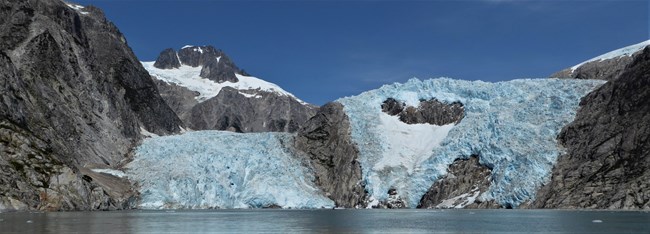
NPS Photo/ D Kurtz 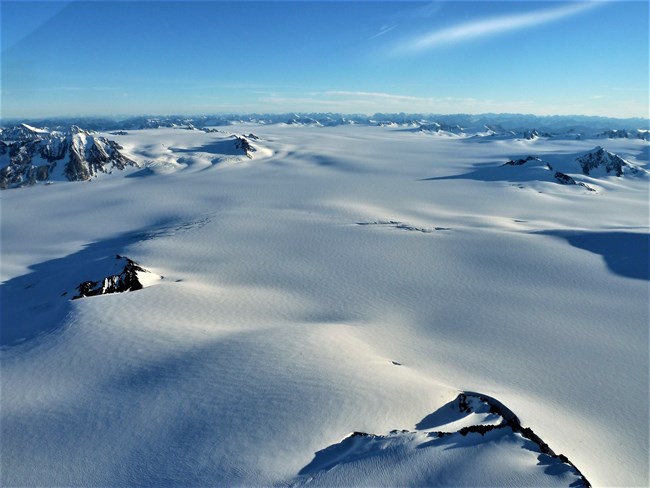
NPS Photo 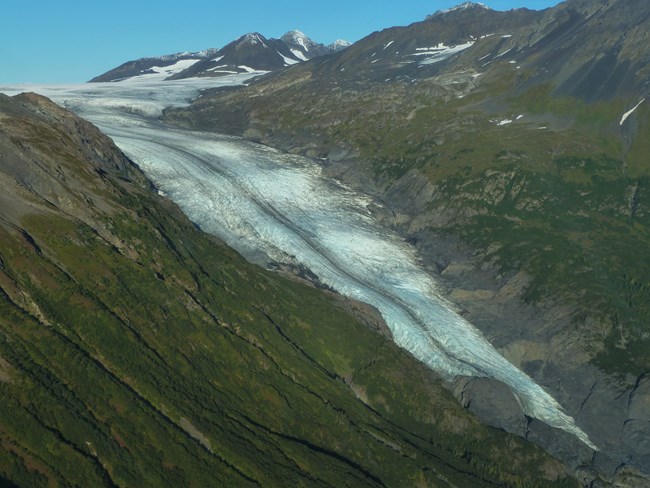
NPS Photo/ D Kurtz 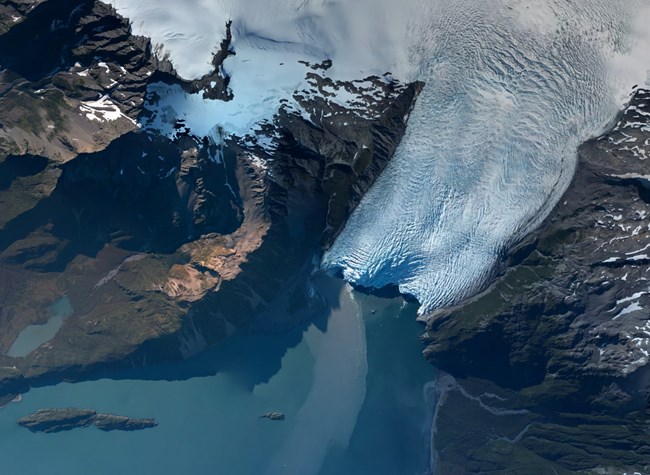
NPS Photo/ D Kurtz 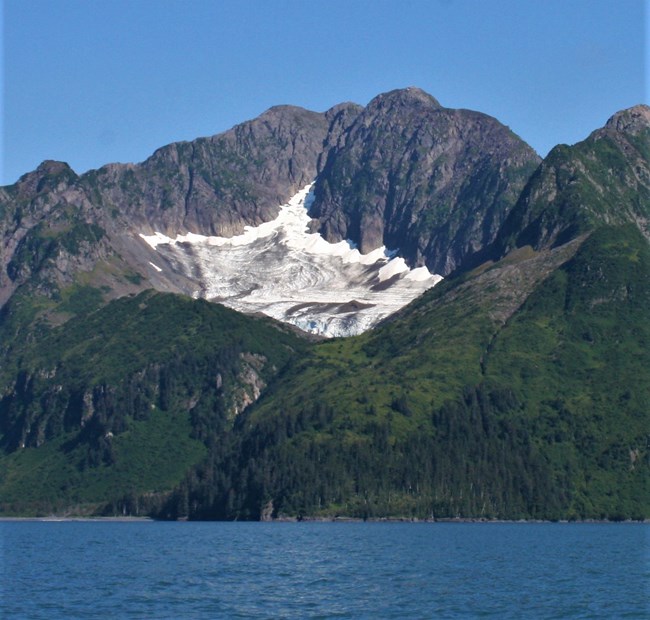
NPS Photo/ D Kurtz 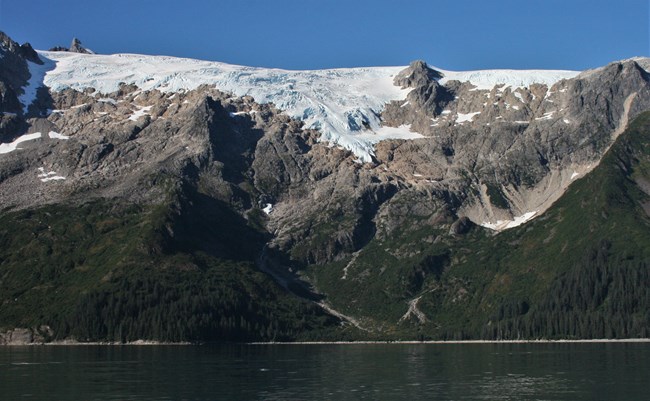
NPS Photo/ A Collins 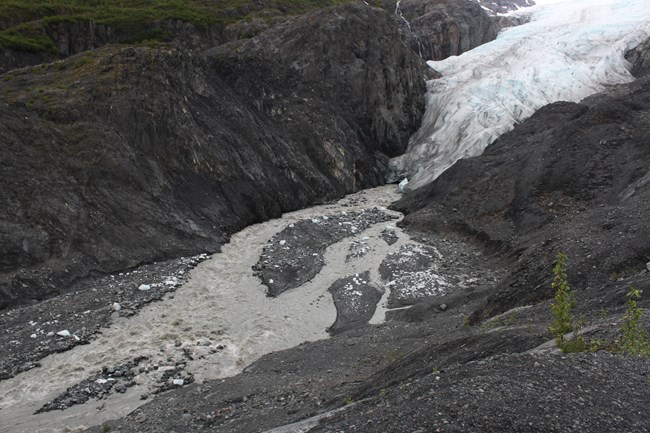
NPS Photo/ A Collins 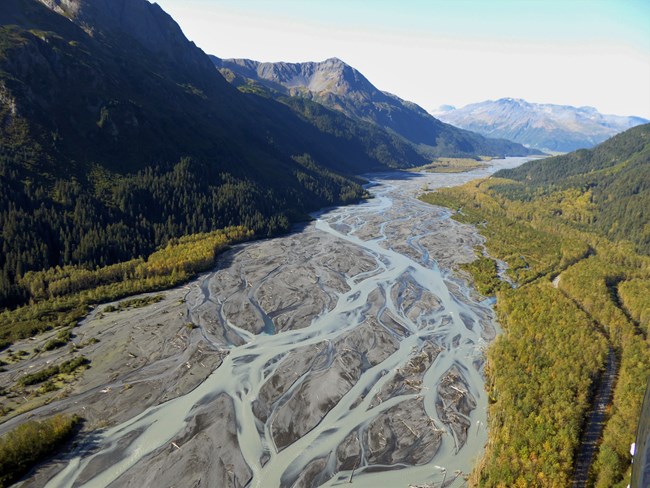
NPS Photo/ D Kurtz
Glacial Till- Sediment material that has been directly deposited by glacier ice. Glacial till is mixed together, it is not sorted or layered by size.
Moraine- a mound, ridge, or other distinct accumulation of glacial till.
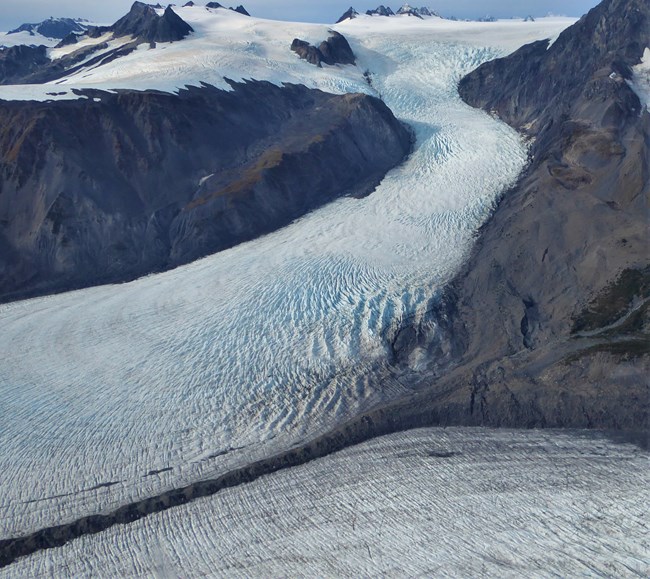
NPS Photo/D Kurtz 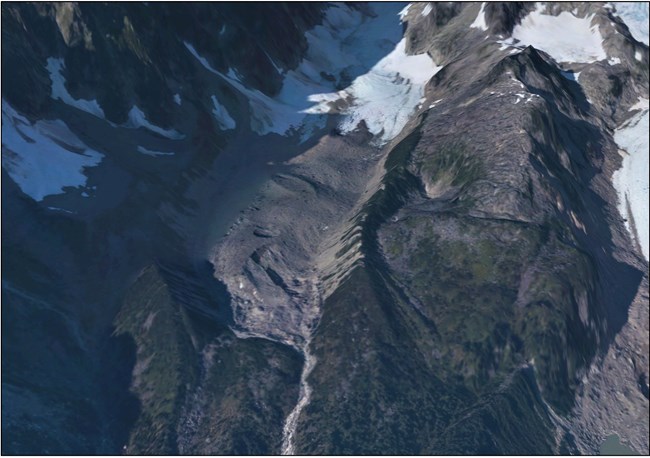
NPS Orthophoto from 2016 |
Last updated: October 30, 2020
